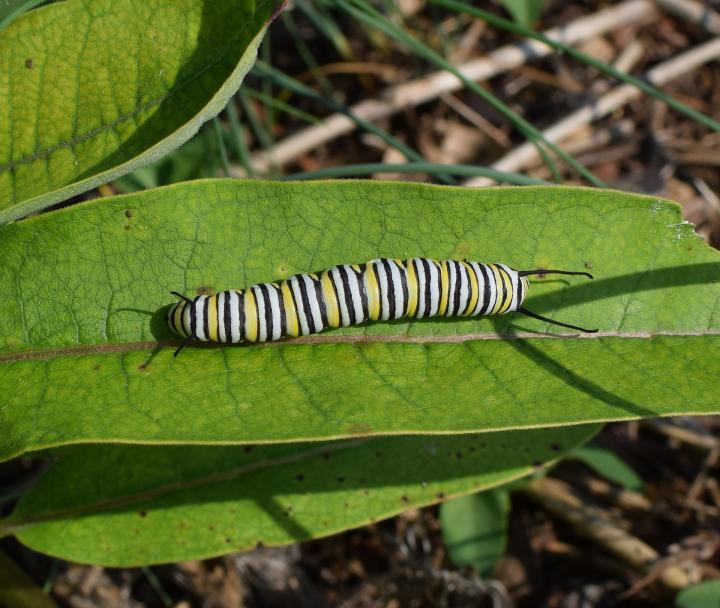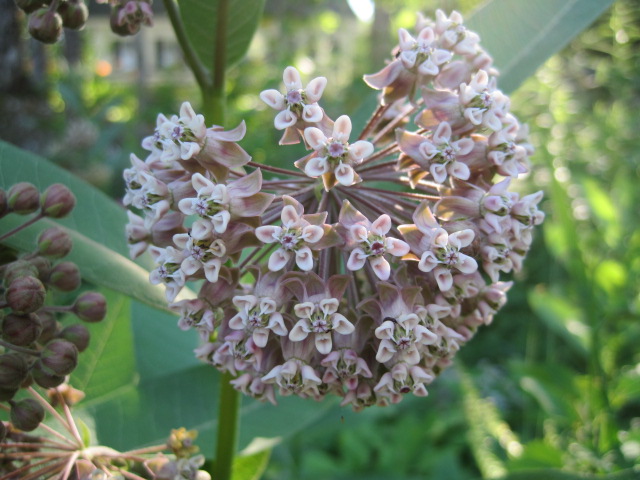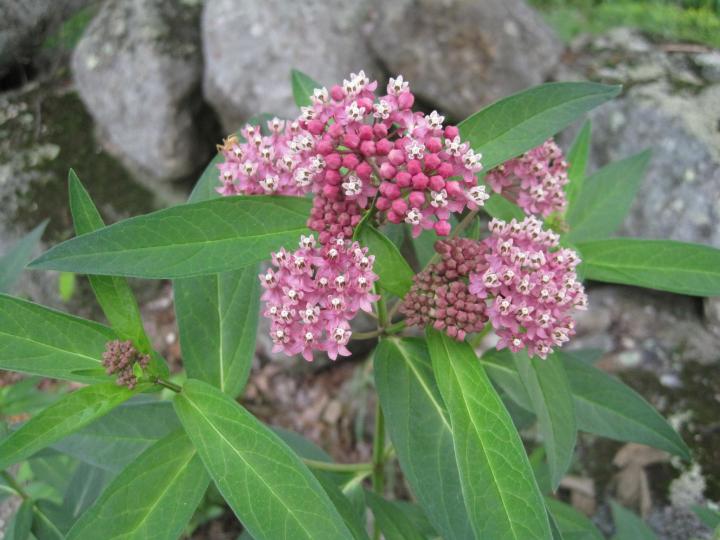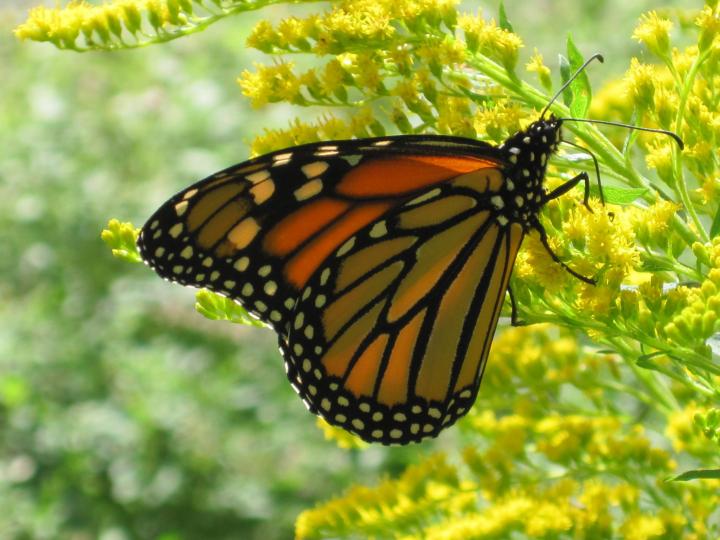
Subhead
Milkweed Is on the Menu!
You left out California species of milkweed - many milkweeds can be toxic to Monarchs and disrupt their migration if they are not native to their flyways.
California has 15 native milkweed species - here are the commercially available ones (each is native to specific regions of CA):
Asclepias asperula - Antelope Horns
Asclepias californica - California Milkweed
Asclepias cordifolia - Purple milkweed
Asclepias eriocarpa - California Monarch Milkweed
Asclepias erosa - California Desert Milkweed
Asclepias fascicularis - California Narrowleaf Milkweed
Asclepias speciosa - California Showy Milkweed
Asclepias vestita - Woolly Milkweed
https://xerces.org/sites/default/files/publications/19-004.pdf
Considering my photo documentation of the Monarch (30,000) I have been considering donating to the NH Audubon in Concord NH where I gave many lectures and had an exhibit (NH Public TV had a program on it). keeping things local.
More info about the Monarch:
1) The Mexico wintering areas were first discovered and an article in the August 1976 magazine describes the finding. A Monarch was found with a tag showing it came from Minnesota.
2) The Monarch Watch at the Univ of Kansas Chip Taylor has that program and has materials for school kids including the tagging and tracking.
3) There are two "societies" of Monarchs, the Eastern and the Western The Eastern migrates to Mexico. The Western migrate to Pacific Grove CA.
4) The Monarch winter sites are in danger. The three Mexican sites by logging. The Western by ignorant town officials that permitted the cutting of the trees Monarch's winter over in. A PBS program is about this and the people trying to replant the special trees. I have contacted them.
5) I have also contacted some professors (involved with Monarchs) in universities (WA & MN) about my status knowing the Monarch. Was given the cold shoulder. Guess they didn't like a person that financially his own studying and wasn't a scholar with grants. Who are they helping????
6) There are easy methods of determine a male & female. A male has narrow black veins on the wings and a dark spot on the two lower wings. A female has wider veins, no spot. Also being some distance, observe them in a field. The female is going and landing on the milkweed laying eggs underside the leaves. The male has a Life of Reilly, going from any flower to flower.
7) At the Prescott Park in Portsmouth NH the Monarchs favored one flower type, the Tithonia (Mexican Sunflower). Has a convenient landing platform to drink the nectar and perhaps a favorite color.
8) The life cucles are: It takes about 5 generations for the Monarch to arrive in the VT-NH and northern areas, leaving Mexico in February, arriving about the end of June for the nice young tender milkweed.
Takes two weeks from egg laying to hatching. Usually in August they are ready to return to Mexico, being some five generations of not being there. How do they know? If studying, it's determined "what is so small is so huge".
9. My pics captured the young caterpillar inside the egg having a black head. The first thing they consume is the egg shell, then traveling to the top tender leaves of the plant.
10) MA and some states in the mowing of road sides have allowed the Milkweed alone for the Monarchs. I've given the seeds to peolle. Milkweed is also a great plant to eat.
Just some of my observations, capsulized in short form. Think about it.
While Pacific Grove has done an excellent job of promoting itself as the Monarch Butterfly Mecca, Pismo State Beach Monarch Grove typically has a much more concentrated population of Monarchs. And some good news, the ' 21-'22 overwintering season saw a marked increase in butterflies. About 21,000 were counted in Nov of '21!
Very interesting about two sociities of Monarch Butterflies; Eastern to Mexico + Western to California; Ill get some Tithonia (Mexican Sunflower); thanks again: (I have native Milkweed):
After the Hummer family left the Monarch Catapiller showed up at the swim pool house they opened up for the public to watch activity. It took Catty 3 days to settle down in the cage to build the Cocoon. I watched 24-7 it was fascinating. Built the most beautiful Turquoise w Gold Beads spun around it till hatch time. Under the Orange we ese on wing, it was deep Blood Red so beautiful. The Aphids totally killed my Milkweed a few yrs ago, going to plant some . thank you for your article
To Tom Chase: I'm pretty sure the Smithsonian Institute would want the Butterfly Collection; contact them; ty~
Your comments about Tropical milkweed have been found to be incorrect. Research by Jaap de Roode’s lab at Emory University, confirmed that butterflies that are infected by OE tend to prefer the tropical milkweed even more than usual. However the tropical milkweed has been found to be “medicinal” in terms of improving parasite resistance suggesting that they are self medicating their offspring. In the final analysis they determined the effect is certainly real. This is not to suggest that you should only plant tropical milkweed but some balance of the two to help them fight OE.
Thanks for sharing that research. We live in Hawaii where the monarchs do not migrate. The most common milkweed here is the tropical milkweed so at the end of the growing season I always cut it back within a couple inches of the plant base and destroy the top growth which can be infected with the OE. Would it be better to leave the top growth after all?
After my milkweed matures, I find handfuls of tiny golden/orange small bugs on the leaves. Does anyone know what they are?
They are oleander or milkweed aphids (Aphis nerii). They are not native to the US, coming from areas around the Mediterranean where oleander grows prolifically. They are easy to spot, bright orangey-yellow with black legs and 2 black stalks called cornicles on their back end. They can quickly form a huge colony since they do not need fertilization to reproduce and they give birth to live nymphs. Parasitic wasps will lay their eggs in them and ladybug larvae will chow down on them but to keep ahead of an infestation it is best to start squishing them as soon as you see a few.
- « Previous
- 1
- 2
- …
- 10
- Next »
















Comments